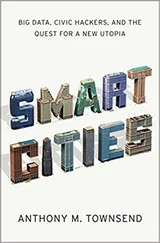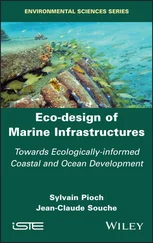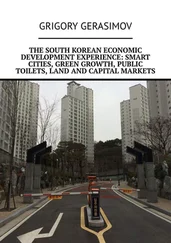Cyberphysical Smart Cities Infrastructures
Здесь есть возможность читать онлайн «Cyberphysical Smart Cities Infrastructures» — ознакомительный отрывок электронной книги совершенно бесплатно, а после прочтения отрывка купить полную версию. В некоторых случаях можно слушать аудио, скачать через торрент в формате fb2 и присутствует краткое содержание. Жанр: unrecognised, на английском языке. Описание произведения, (предисловие) а так же отзывы посетителей доступны на портале библиотеки ЛибКат.
- Название:Cyberphysical Smart Cities Infrastructures
- Автор:
- Жанр:
- Год:неизвестен
- ISBN:нет данных
- Рейтинг книги:4 / 5. Голосов: 1
-
Избранное:Добавить в избранное
- Отзывы:
-
Ваша оценка:
- 80
- 1
- 2
- 3
- 4
- 5
Cyberphysical Smart Cities Infrastructures: краткое содержание, описание и аннотация
Предлагаем к чтению аннотацию, описание, краткое содержание или предисловие (зависит от того, что написал сам автор книги «Cyberphysical Smart Cities Infrastructures»). Если вы не нашли необходимую информацию о книге — напишите в комментариях, мы постараемся отыскать её.
Cyberphysical Smart Cities Infrastructures: Optimal Operation and Intelligent Decision Making,
Cyberphysical Smart Cities Infrastructures
Cyberphysical Smart Cities Infrastructures — читать онлайн ознакомительный отрывок
Ниже представлен текст книги, разбитый по страницам. Система сохранения места последней прочитанной страницы, позволяет с удобством читать онлайн бесплатно книгу «Cyberphysical Smart Cities Infrastructures», без необходимости каждый раз заново искать на чём Вы остановились. Поставьте закладку, и сможете в любой момент перейти на страницу, на которой закончили чтение.
Интервал:
Закладка:
38 38 Xiong, G., Zhu, F., Fan, H. et al. (2014). Novel its based on space‐air‐ground collected big‐data. 17th International IEEE Conference on Intelligent Transportation Systems (ITSC), IEEE, pp. 1509–1514.
39 39 Mazimpaka, J.D. and Timpf, S. (2017). How they move reveals what is happening: understanding the dynamics of big events from human mobility pattern. ISPRS International Journal of Geo‐Information 6 (1): 15.
40 40 Mohammadi, F.G. and Amini, M.H. (2019). Promises of meta‐learning for device‐free human sensing: learn to sense. Proceedings of the 1st ACM International Workshop on Device‐Free Human Sensing, pp. 44–47.
41 41 Wei, K., Deng, C., and Yang, X. (2020). Lifelong zero‐shot learning. Proceedings of the 29th International Joint Conference on Artificial Intelligence, IJCAI‐20, pp. 551–557.
42 42 Mohammadi, F.G., Arabnia, H.R., and Amini, M.H. (2019). On parameter tuning in meta‐learning for computer vision. 2019 International Conference on Computational Science and Computational Intelligence (CSCI), IEEE, pp. 300–305.
43 43 Wijekoon, A., Wiratunga, N., and Sani, S. (2018). Zero‐shot learning with matching networks for open‐ended human activity recognition. CEUR Workshop Proceedings.
44 44 Yu, L., Feng, Q., Qian, Y. et al. (2020). Zero‐virus: zero‐shot vehicle route understanding system for intelligent transportation. Proceedings of the IEEE/CVF Conference on Computer Vision and Pattern Recognition Workshops, pp. 594–595.
45 45 Pandey, A., Puri, M., and Varde, A. (2018). Object detection with neural models, deep learning and common sense to aid smart mobility. 2018 IEEE 30th International Conference on Tools with Artificial Intelligence (ICTAI), IEEE, pp. 859–863.
46 46 Asali, E., Shenavarmasouleh, F., Mohammadi, F.G. et al. (2020). DeepMSRF: A novel deep multimodal speaker recognition framework with feature selection. ArXiv, abs/2007.06809.
47 47 Redmon, J., Divvala, S., Girshick, R., and Farhadi, A. (2016). You only look once: unified, real‐time object detection. Proceedings of the IEEE Conference on Computer Vision and Pattern Recognition, pp. 779–788.
48 48 Safari, Z., Mursi, K.T., and Zhuang, Y. (2020). Fast automatic determination of cluster numbers for high dimensional big data. Proceedings of the 2020 the 4th International Conference on Compute and Data Analysis, pp. 50–57.
49 49 Golob, T.F. and Recker, W.W. (2003). Relationships among urban freeway accidents, traffic flow, weather, and lighting conditions. Journal of Transportation Engineering 129 (4): 342–353.
50 50 Xu, J., Deng, D., Demiryurek, U. et al. (2015). Mining the situation: spatiotemporal traffic prediction with big data. IEEE Journal of Selected Topics in Signal Processing 9 (4): 702–715.
51 51 Mohamed, N. and Al‐Jaroodi, J. (2014). Real‐time big data analytics: applications and challenges. 2014 International Conference on High Performance Computing & Simulation (HPCS), IEEE, pp. 305–310.
52 52 Park, H.‐M., Park, N., Myaeng, S.‐H., and Kang, U. (2020). PACC: Large scale connected component computation on Hadoop and Spark. PLoS ONE 15 (3): e0229936.
3 Embodied AI‐Driven Operation of Smart Cities: A Concise Review
Farzan Shenavarmasouleh1, Ghareh Mohammadi1, M. Hadi Amini2, and Hamid Reza Arabnia1
1Department of Computer Science, Franklin College of Arts and Sciences, University of Georgia, Athens, GA, USA
2Knight Foundation School of Computing and Information Sciences, Florida International University, Miami, FL, USA
3.1 Introduction
A smart city is an urban area that employs information and communication technologies (ICT) [1], an intelligent network of connected devices and sensors that can work interdependently [2, 3] and a distributive manner [4] to continuously monitor the environment, collect data, and share them among the other assets in the ecosystem. This uses all the available data to make real‐time decisions about the many individual components of the city to ease up the livelihood of its citizens and make the whole system more efficient, more environmentally friendly, and more sustainable [5]. This serves as a catalyst for creating a city with faster transportation, fewer accidents, enhanced manufacturing, more reliable medical services and utilities, less pollution [6], and so on. The good news is any city, even with traditional infrastructures, can be transformed into a smart city by integrating Internet of things (IoT) technologies [7].
An undeniable part of a smart city is its use of smart agents. These agents can vary a lot in sizes, shapes, and functionalities. They can simply be light sensors that along with their controller act as the energy‐saving agents or could be more advanced machines, with complicated controllers and interconnected components that are capable of tackling more advanced problems. The latter agents usually come with an embodiment with numerous sensors and controllers built in them, enabling them to perform high‐level and human‐level tasks such as talking, walking, seeing, and complex reasoning along with the ability to interact with the environment. Embodied artificial intelligence is the field of study that takes a deeper look into these agents and explores how they can fit into the real‐world and how they can eventually act as our future community workers, personal assistants, robocops, and many more.
Imagine arriving home after a long working day and seeing your home robot waiting for you at the entrance door. Although it is not the most romantic thing ever, you then walk up to it, and ask it to make a cup of coffee for you and also add two teaspoons of sugar if there is any in the cabinet. For this to become reality, the robot has to have a vast range of skills. It should be able to understand your language and be able to translate questions and instructions to the action. It should be able to see its surroundings and have the ability to recognize objects and scenes. Last but not the least, it must know how to navigate in a big dynamic environment, interact with the objects within it, and be capable of doing long‐term planning and reasoning.
In the past few years, there has been significant progress in the fields of computer vision, natural language processing, and reinforcement learning, thanks to the advancements in deep learning models. Many things are now possible because of these that seemed impossible a few years ago. However, most of the work has been done in isolation from other lines of work. It means that the trained model can only take one type of data (e.g. image, text, video) as the input and perform a single task that it is asked for. Consequently, such a model acts as a single‐sensory machine as opposed to a multi‐sensory one. Also, for the most part, they all belong to Internet artificial intelligence (AI) rather than embodied AI. The goal of Internet AI is learning patterns in text, images, and videos from the datasets collected from the Internet.
If we zoom out and look at the way models in Internet AI being trained, we realize that generally supervised classification is the way to go. For instance, we provide a certain number of dog and cat photos along with the corresponding labels to a perception model. Moreover, if the number is large enough, the model then can successfully learn the differences between these two animals and discriminate between them. Learning via flashcards falls under the same umbrella for humans.
Extensive amount of time has been devoted in the past years to gather and build huge datasets for the imaging and language communities. A few considerable markers of this can be ImageNet [8], MS COCO [9], Sun [10], Caltech‐256 [11], and Places [12] created for vision tasks; SQuAD [13], GLUE [14], and SWAG [15] built for language objectives; and Visual Genome [16] and VQA [17] datasets created for joint purposes to name a few.
Читать дальшеИнтервал:
Закладка:
Похожие книги на «Cyberphysical Smart Cities Infrastructures»
Представляем Вашему вниманию похожие книги на «Cyberphysical Smart Cities Infrastructures» списком для выбора. Мы отобрали схожую по названию и смыслу литературу в надежде предоставить читателям больше вариантов отыскать новые, интересные, ещё непрочитанные произведения.
Обсуждение, отзывы о книге «Cyberphysical Smart Cities Infrastructures» и просто собственные мнения читателей. Оставьте ваши комментарии, напишите, что Вы думаете о произведении, его смысле или главных героях. Укажите что конкретно понравилось, а что нет, и почему Вы так считаете.

![Чарльз Диккенс - A Tale of Two Cities [С англо-русским словарем]](/books/26616/charlz-dikkens-a-tale-of-two-cities-s-anglo-thumb.webp)










